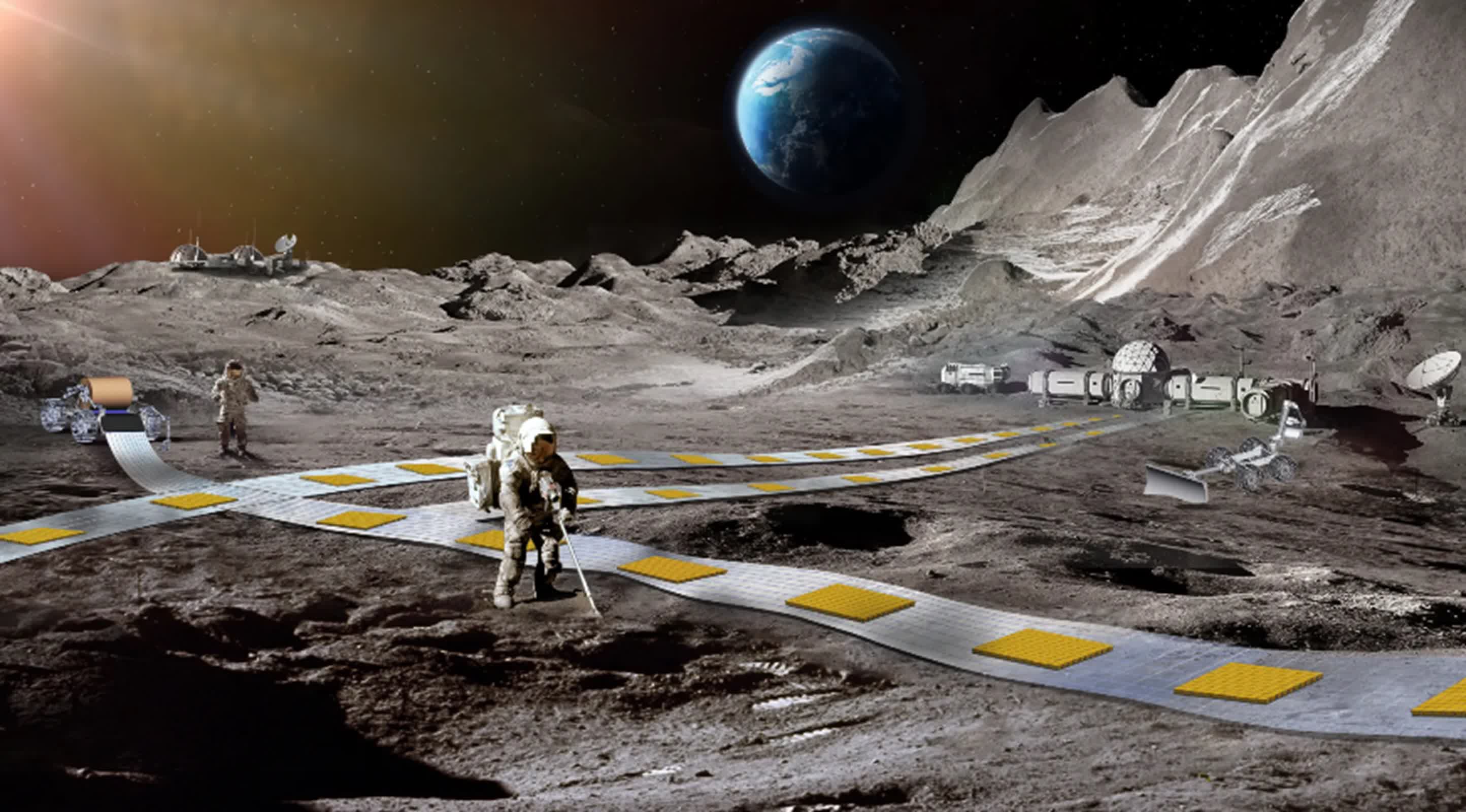Why it matters: NASA is funding projects that seem to come straight out of science fiction literature. Even John Nelson, a representative of the space agency, acknowledges this, referring to them as "science fiction-like concepts." While there is no guarantee that they will materialize, it is possible that some may one day become part of an aerospace mission.

A lunar railway system. A fluid-based telescope. A transit system to move humans and cargo to Mars. These are among the projects that NASA's Innovative Advanced Concepts (NIAC) program is setting aside funding for to continue researching. There are six projects in total, each having completed the initial NIAC phase. Now advancing into Phase II, these conceptual studies will receive up to $600,000 to continue their work over the next two years.
Don't expect to see them materialize anytime soon, however. They are still in the exploratory stage, and there is no guarantee they will come to fruition. Nonetheless, they are progressing along the necessary path to be considered for a future aerospace mission if they advance to the final NIAC phase.
"Our NIAC fellows never cease to amaze and inspire, and this class definitely gives NASA a lot to think about in terms of what's possible in the future," said John Nelson, NIAC program executive at NASA headquarters in Washington.

A fundamental requirement for advancing space research is the development of ever-larger telescopes. Unfortunately, scaling current space telescope technologies to aperture sizes beyond 10 meters does not appear economically viable, according to Edward Balaban at NASA. "Thus, there is a need for cost-effective solutions to scale space telescopes to larger sizes."
The FLUTE project presents a potential solution, aiming to create space observatories with large aperture, or unsegmented liquid primary mirrors. Such mirrors would be formed in space using fluidic shaping in microgravity, Balaban explains. This concept has already been demonstrated in laboratory neutral buoyancy environments, during parabolic microgravity flights, and aboard the International Space Station.

Another of NASA's projects is the pulsed plasma rocket. Simply put, there is currently no technology capable of efficiently and rapidly moving humans and cargo through the vast distances of space. A propulsion system that can generate high thrust with a high specific impulse could fulfill this task, but as just mentioned, no such technology exists.
Howe Industries is presently developing a propulsion system that may generate up to 100,000 N of thrust with a specific impulse (Isp) of 5,000 seconds, according to Howe's Brianna Clements. "The exceptional performance of the PPR, combining high Isp and high thrust, holds the potential to revolutionize space exploration," she writes, noting that the system allows for manned missions to Mars to be completed within a mere two months.

NASA also aims to construct the first lunar railway system to facilitate payload transport on the Moon, as outlined by Ethan Schaler of the NASA Jet Propulsion Laboratory. Dubbed FLOAT for short, the system would utilize unpowered magnetic robots that levitate over a three-layer flexible film track using diamagnetic levitation. This includes a flex-circuit layer that generates electromagnetic thrust to propel robots along tracks, along with an optional thin-film solar panel layer that generates power for the base when exposed to sunlight.
NASA holds high hopes for this project, considering such a transport system critical to the daily operations of a sustainable lunar base envisioned for the 2030s, as outlined in NASA's Moon to Mars plan and mission concepts such as the Robotic Lunar Surface Operations 2, notes Schaler.
NASA is placing bets on a lunar rail system and cargo transit to Mars